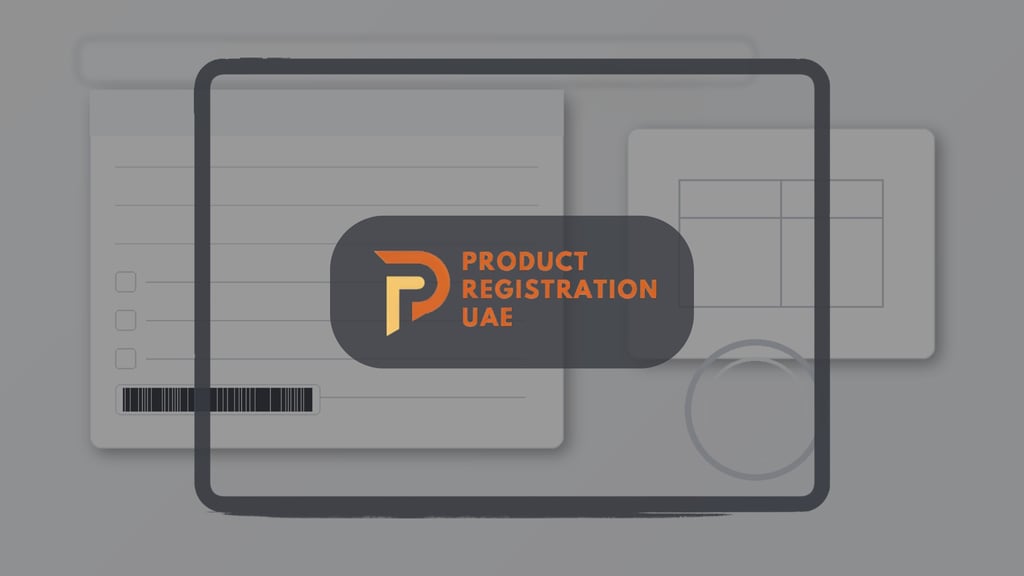UAE Ecommerce Compliance: Align Approvals & Listings
UAE ecommerce compliance that keeps Amazon/Noon live—map approvals to SKU/GTIN, verify claims and Arabic labels, and prevent mark misuse or delistings.
10/21/20254 min read


UAE E‑Commerce Listing Compliance:
Align Montaji/MoHAP/ECAS with Amazon.ae & Noon
Opening
In the UAE, your online listing is part of your label. If Amazon.ae or Noon content diverges from your Montaji, MoHAP, ECAS/EQM, or QCC approvals, expect takedowns, escalation emails, or even import holds at the warehouse gate.
This guide focuses on where brands get flagged and how expert governance keeps listings live, consistent, and compliant.
What Marketplaces Expect to Match (Conceptual—not a how‑to)
Claims vs certificate scope
Health, functional, safety, or performance statements must fit the approved category and dossier.
A moisturizer approved as a cosmetic cannot promise to “treat eczema,” and a detergent cannot imply biocidal efficacy without the right performance evidence.
Pack images and Arabic text
Every image—hero, gallery, A+—should reflect approved artwork, including mandatory Arabic, warnings, and ingredient disclosures. “Promo‑only” artwork, old labels, or mockups with extra claims invite review requests or removals.
GTIN/SKU consistency
The listing GTIN must belong to the same certificate/SKU family and appear in your traceability records and commercial documents. Mismatched GTINs are a common reason for marketplace pauses and customs questions.
Regulated seals/marks
Use UAE Mark/EQM, halal icons, and similar certifications only when explicitly authorized by the approval. Decorative placement without entitlement is treated as misrepresentation.
Common Triggers for Takedowns & Holds
Up‑rated claims online
Post‑approval edits change “hydrates” into “clinically proven relief in 24 hours,” or add disease references. When marketplace reviewers compare copy with dossier language, the listing is flagged for exceeding scope.
Variant sprawl
New sizes, packs, or flavors are added under certificates that do not cover them. One customer complaint later, the entire parent listing is paused while coverage is checked.
Cross‑border copy‑paste
EU/US pages are cloned into the UAE store. Phrases like “FDA cleared,” non‑UAE nutrition/health claims, or non‑Arabic warnings trigger manual review.
Barcode/GTIN swaps
Marketing spins a new GTIN for retail reasons, but approvals and traceability are not updated. Warehouse scans catch the mismatch; goods stop.
Translation drift
Arabic copy promises effects not present in English, or omits mandatory warnings. Review teams treat discrepancies as label non‑compliance.
Category Hot‑Spots (What to Watch)
Cosmetics & personal care (Montaji)
Borderline claims—acne, eczema, hair growth—shift a cosmetic toward a therapeutic space. Fragrance, preservative, sunscreen, and whitening/brightening statements require careful phrasing and evidence alignment.
Supplements (MoHAP)
Therapeutic or deficiency‑treatment language, dosage framing that implies therapy, or medical imagery will trigger queries on classification, actives, and tolerable upper levels.
Detergents/disinfectants (ESMA/EQM)
“Kills 99.99%” implies specific performance standards and test conditions. If listings make that claim without the right pathway or evidence, takedowns follow.
Food & F&B
Nutrition/health claims and age/allergen statements must reflect composition and approved labeling. Phrases like “sugar‑free” or “high protein” have defined criteria.
Governance That Keeps Listings Live (Service‑led)
Approval‑to‑listing map
We build a clear chain from certificate → SKU/GTIN → listing, so marketplace data always mirrors approved scope and evidence. This prevents variant creep and GTIN mismatches at customs.
Copy & visual review
Before publishing, we review titles, bullets, A+ modules, images, icons, and on‑image Arabic. Claims are aligned with the approved dossier; non‑entitled marks are removed.
Change control
When marketing proposes new claims or variants, we determine if it is a simple content update or a regulatory variation. If a variation is required, we update approvals before listings change.
Incident response
If a listing is flagged, we compile the justification pack (approvals, test evidence, label PDFs) and handle marketplace liaison, while coordinating any authority clarifications.
Mid‑CTA: Launching or cleaning up Amazon/Noon listings? Send your certificates, current labels, and draft copy. We’ll validate claims and GTINs, align with approvals, and help keep pages live.
Hidden Costs of Non‑Compliance (Why to involve us early)
Delistings in peak season: Ads pause, search rank drops, and FBA/warehouse fees accumulate on unsellable stock.
Re‑testing and relabeling: Adjusting claims after the fact may require new evidence and artwork cycles.
Mark misuse investigations: ECAS/EQM icon placement without entitlement leads to corrective actions and credibility damage.
Distributor friction: When approvals don’t match live listings, partners dispute responsibility for withdrawals and penalties.
FAQ
Can we use stronger claims online than on the approved label?
No. Online claims must match the certificate scope and supporting evidence. If marketing needs stronger language, we first assess whether a formal variation (or a new approval) is required—then update the approval before the listing changes.
Does Amazon UAE or Noon verify Montaji/MoHAP/ECAS approvals directly?
They can and do request proof when listings are flagged. The safest response is a justification pack: approval PDFs, test/evidence summary, and current label artwork that mirrors the listing.
Do we need a new approval for every variant listed under one parent?
Only variants explicitly covered by the certificate (size, flavor, color, voltage, pack) may sit under it. We map SKU/GTIN → certificate scope and tell you when a variation or separate approval is required.
Are “clinically proven” statements acceptable if we cite a study?
Only if the wording, the study design, and the marketed product match your approved dossier and local standards. Otherwise we rephrase the claim or upgrade evidence before publishing.
What if the GTIN on our listing isn’t on the certificate?
Expect pauses/takedowns and potential customs questions. We align the GTIN list in approvals (or adjust the listing) so certificates, labels, invoices, and marketplace data match.
Final Word
Marketplaces reward consistency. When claims, images, Arabic content, GTINs, and regulated marks match what’s approved, pages stay live and operations run quietly.
When they don’t, teams lose weeks to rework while inventory sits. The safest way to scale is to link approvals, labels, and listings under one governance flow.
Send us your approvals, pack artwork, and listing drafts. We’ll run a compliance pre‑check and confirm what can go live, what needs edits, and what requires a formal variation.
Contact us or use our chatbot in the bottom right corner for expert help ASAP.
Suggested Related Blogs
Stability Testing in the UAE (2025): The Hidden Requirement Behind Shelf‑Life Approval
Importer vs AR UAE (2025): Who Files, Labels & Recalls
Read UAE Distributor Switch: Keep ECAS/EQM, Montaji & MoHAP to transfer certificates & more


